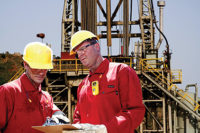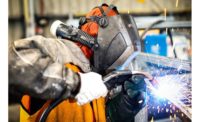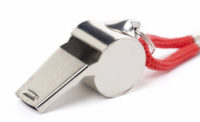On dangerous or risky job sites, and within certain environments, personal protective equipment (PPE) must be worn at all times. It makes perfect sense, because the gear is designed specifically to mitigate severe or fatal accidents. Helmets, for example, protect the head from falling objects, overhead fixtures, and much more.
Some other notable PPE items include eyewear, steel-toed or reinforced boots, gloves, face shields, respiratory equipment, and high-visibility vests. While some of these may not necessarily expire, all protective gear must remain in top-notch and safe working condition.
Rips or tears in gloves are going to render them useless when working with dangerous chemicals or materials. Therefore, the gear must be regularly inspected and replaced, if and when failures or damage are discovered.
Unfortunately, identifying the replacement period isn’t always straightforward. Some gear may not show visible damage, even when the time is right.
How to identify the right time to replace PPE
As mentioned, it may not always be possible to see when gear needs to be replaced on the surface level. Replacing it too early would mean wasting gear and financial losses from paying for the new equipment. Replacing it too late could mean injuries or even death for the involved workers. Here are some tips on choosing the right time.
Establish inspection protocols and standards
The first step is to either assign a few workers specifically for PPE inspections or to delegate the work to each individual on the team — every person is responsible for their equipment, in other words.
Then, you must define an audit period, whether that’s before a shift starts every day or night, or before the gear is doled out.
Inspectors should follow a standard process to identify potential damage and failure points. If and when a negative factor is found, the gear should immediately be taken out of circulation. Bear in mind, it’s necessary to have extra replacement gear on hand for when this inevitably occurs.
Here’s what inspectors should be looking for:
- Discoloration or material degradation
- Rips, tears, holes, cracks, indentions, or visible damage
- The age of the gear compared to the manufacturer’s expiration date
- How many owners the gear has had
- Missing components such as fuel, filters, or other resources
- Failing straps, locks, adapters, or security devices
Don’t forget that items that have been in storage for a long time may have deteriorated, even if they were not used often. This is common with certain types of gear, including fall protection equipment.
By establishing a grading system that applies to all PPE, you and your team can instantly discern the conditions of said gear.
Always set a threshold for when the equipment needs to be replaced. If a helmet is inspected and defined as “Grade C,” for instance, it might be necessary to replace it until it can be fixed. It may otherwise need to be disposed of.
Moreover, certain grades and conditions should be relegated to various job sites, tasks, and environments. At a site where gloves are optional, lower-grade gear may be acceptable to use. On a major project site where objects and materials are constantly in motion and headgear is critical, higher grades must always be used.
Was the equipment supplied personally, or was it issued from company inventory? This may seem insignificant, but it does play a role, especially during inspections.
Personal gear may leave the job site, and workers may take it home with them or potentially use it elsewhere. Officially issued gear may be kept on-site or in company-owned storage and divvied out before work starts.
Official gear may also go back and forth with the workers, which poses another series of potential issues. Worse still, official gear may wear faster depending on how it’s treated.
The scenario and source both need to be identified and factored into the inspection and standards process.
For certain equipment, like safety harnesses and helmets, OSHA has requirements regarding inspection, handling, and acceptable condition. Make sure you and your team understand what those requirements are, and ensure they are met at all times.
At the very least, some of the guidelines can be incorporated into your inspection and replacement process.
Whether the employee is hurt or not, if there is an incident, the affected equipment should almost always be replaced. Under rare circumstances, it may be possible to retain the gear after a close inspection, but it depends on the incident.
If a heavy object falls on a worker’s helmet, for example, it should be replaced. After such an impact, the materials may be compromised even if there’s no visible damage.
Don’t forget about stationary equipment
Personal protective equipment doesn’t just come in wearable form. It may also be stationary. With heavy machinery and volatile systems, workers may remain behind a protective shield. These are often overlooked even when they show signs of significant wear or damage.
Inspect, repair, and replace stationary protective equipment just as you would wearables.
A lapse in judgment is often what results in a mistake or accident. The same is true for equipment. It may seem like a hassle, having to inspect or replace gear constantly, but it’s much better to be safe than sorry, especially when there are lives on the line.
Encourage your crews, managers, and everyone working at a site or facility to remain vigilant. They should be wearing the necessary gear at all times. Their gear should always be inspected before a shift or major project starts. It should be replaced if it’s damaged or compromised. It should also be replaced when there is an accident.
If these guidelines are followed, you’ll know exactly when personal protective equipment needs repair or replacement.




